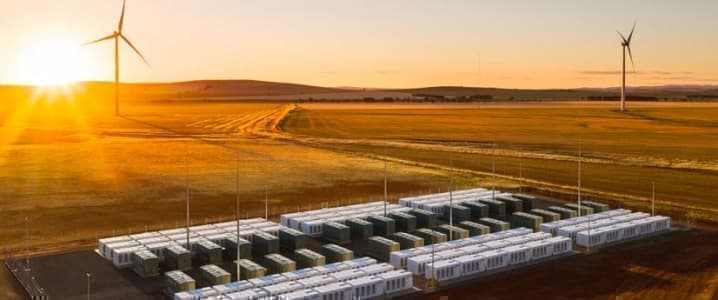Large-scale battery power capacity in the United States jumped by 35 percent last year to reach 1,650 megawatts (MW), and the significant growth of the past few years is set to continue, the Energy Information Administration (EIA) said in a report this week.
U.S. large-scale battery capacity has tripled over the past five years, the report showed.
The exponential growth is set to continue over the next few years—as per EIA estimates, utilities have reported plans to install over 10,000 MW of additional large-scale battery power capacity in the United States between this year and 2023. This new battery power capacity would be 10 times the capacity in 2019.
Solar-plus-storage projects, where the battery systems are co-located with or connected to solar power generation projects, have accounted for much of the recent new large-scale battery capacity, the EIA said.
The Administration found that five states accounted for more than 70 percent of U.S. battery storage power capacity as of December 2020. These were California, Texas, Illinois, Massachusetts, and Hawaii.
Unsurprisingly, California had the largest share of installed battery capacity, at 31 percent, or 506 MW, of the total in the United States. Texas, Illinois, Massachusetts, and Hawaii each have more than 50 MW of installed large-scale battery power capacity.
During the first quarter of 2021, a total of 910 megawatt-hours (MWh) of new energy storage systems were brought online in the U.S., according to the U.S. Energy Storage Monitor report from Wood Mackenzie and the U.S. Energy Storage Association (ESA). This was a 252 percent jump compared to the first quarter of 2020, making it the biggest Q1 so far for the U.S. storage market.
“It’s clear that the energy storage market is poised for tremendous growth in 2021 and beyond. The ‘Storage Decade’ is upon us with the convergence of a transforming power and transportation system, and the growing need for decarbonisation and resilience,” said Jason Burwen, ESA Interim CEO.
By Tsvetana Paraskova for Oilprice.com
More Top Reads From Oilprice.com:
- What Happens If We Stop Pumping Oil Tomorrow?
- Oil Sinks As Demand Outlook Worsens
- Another Wave Of COVID Could Dampen Oil Demand



















Likely by 2023 there will be 25 GW's not 10 GW's.
Recent week CAISO is showing approx. 3 to 4 GWh's of battery dispatch being used to curb peak demand each evening. That only represents 1/3 of battery storage at utility scale that is in operation in the US today.